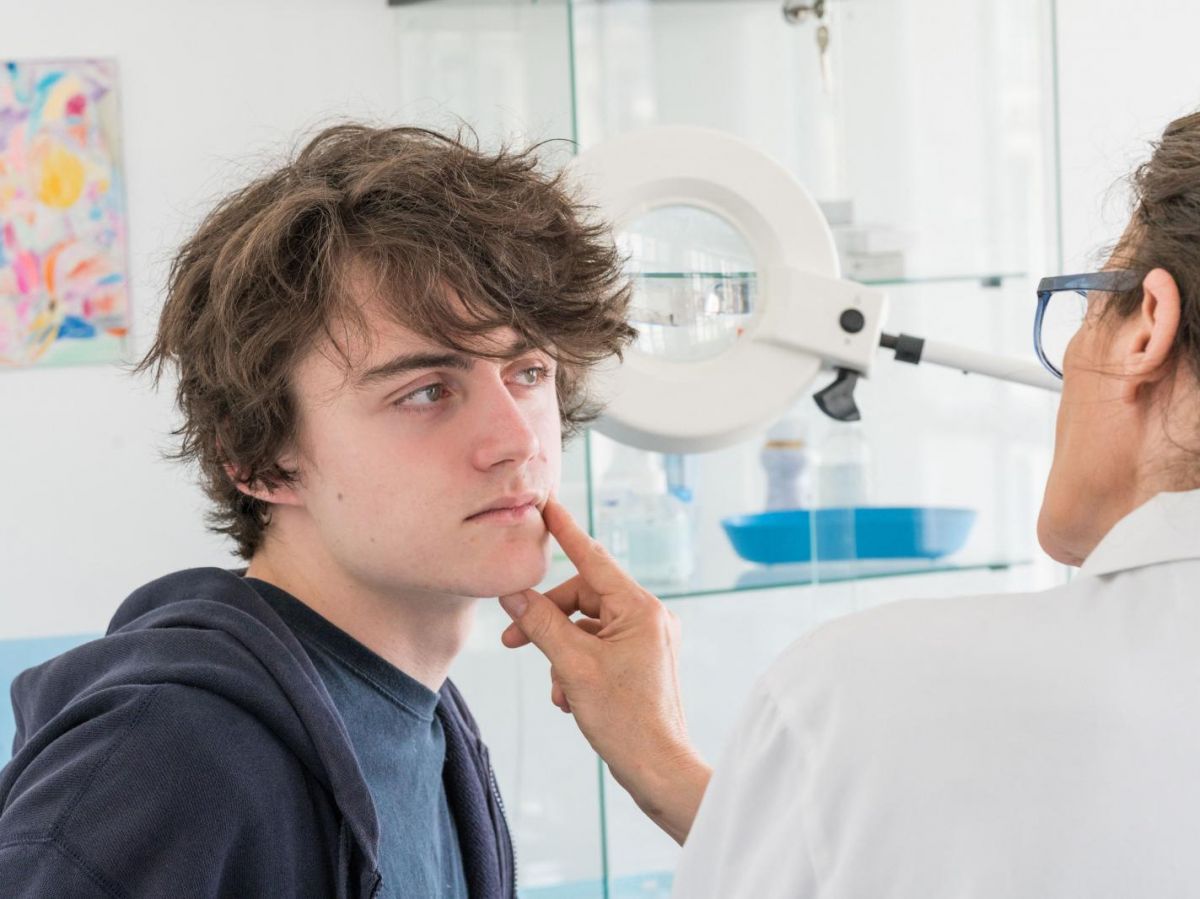Acne is very often associated with adolescents. 75% of them are affected by it. But this inflammation also affects 1 in 10 women after 25 years and 3% of men. Acne results from a change in the viscosity of sebum, which leads to the abnormal proliferation of bacteria.
In a new study, researchers from the University Hospital of Munich (Germany) have discovered a dietary habit that is extremely effective against this inflammatory disease. Their results have been published in the Journal of Cosmetic Dermatology.
What is acne?
We are well aware of the lesions caused by acne: comedones, papules, pustules and even nodules and cysts. But how does acne occur? This skin disease is more precisely a " inflammatory disease of the pilosebaceous follicle”, indicates the site Ameli. A sebaceous follicle and the entire hair and a sebaceous gland, which produces sebum.
Normally, sebum is fluid and flows through the pores to protect the skin. But in the case of acne, sebum production accelerates and the latter thickens. Dead cells then clog the pores of the skin,” adds Health Insurance. In this oily environment, a bacteria usually present on the skin, Propionibacterium acnes, multiplies abnormally" » Acne lesions thus appear.
Pilosebaceous follicle, including the hair and the sebaceous gland. Credits: SALIEGES/BSIP/BSIP VIA AFRICA
Read alsoFood, hygiene, stress: these factors that aggravate acne
In 95% of people with acne, the face is affected. But it sometimes reaches the back (in almost one in two people with acne) or even the neck. In adults, it can be the result of different situations:
-
It may be a result of teenage acne that has not healed.
-
“ It can also be associated with manifestations linked to excess male hormones (abundant hairiness, menstrual disorders, etc.), or to a polycystic ovarian syndrome" , illustrates Health Insurance.
What is polycystic ovary syndrome?
This hormonal disorder affects more than 5% of women. An ultrasound scan reveals numerous small follicles (at least 20), with a diameter of less than 9 mm, or the presence of a large ovarian volume. In the majority of cases, ovulation and periods are rare or even absent. Finally, excessive hair growth may be observed, due to a high level of certain androgens (male hormones).
Recognizing the different manifestations of acne
Pimples, blackheads, cysts… Acne manifests itself in various forms.
One of the first manifestations is hyperseborrhea, or oily skin, usually on the middle area of the face (forehead, nose, cheeks, chin). It can precede the appearance of pimples by several years. In some cases, it even gives the appearance of dilated pores on the nose and cheekbones.
Sometimes the pore is clogged, we speak of an open comedo, or blackhead. Why this color? A deposit of melanin forms at the opening of the pore. On the other hand, the closed comedo, or whitehead, is a small whitish dome 2 to 3 mm in diameter. It is due to the accumulation of sebum and keratin in the closed hair follicle,” analyzes the Ameli site.
There are also well-known superficial inflammatory lesions: red pimples without pus, "papules"=". And those with a white head that contain pus: pustules.
Finally, in cases of more severe acne, deep lesions may appear: nodules, small painful bumps larger than 5 mm, and cysts of variable volume which do not disappear spontaneously.
Read alsoThe bacteria responsible for acne is useful in strengthening the skin barrier
Good everyday actions
When an acne breakout occurs, there are a few things you can do to help limit its severity. Touching papules and pustules and squeezing blackheads will only make acne worse. "because you irritate your skin and carry microbes onto your skin with your fingers", explains Health Insurance.
Exposure to the sun can also worsen acne lesions because the epidermis thickens. Scars can also become darker. It is therefore recommended not to expose your face directly to the sun and to apply a highly protective cream. Avoid smoking and finally, wash your face morning and evening without rubbing, with a gentle product. Do not use masks, scrubs or non-rinse cleansing milks”, can be read on the Ameli website.
Diet tips for acne?
Until now, there was little evidence of a link between diet and acne. But researchers have now shown a significant reduction in acne following a Mediterranean diet and taking omega-3 supplements, in a cohort of 60 people.
Today, more than 90% of the French population would be deficient in omega 3. In this new study, 98.3% of the participants were deficient in these fatty acids. According to these results, restoring omega 3 to recommended levels has considerably reduced the severity of acne.
“ Lifestyle changes, including dietary recommendations, should not be viewed as opposition to prescription medications, but rather as a valuable adjunct to any modern acne treatment plan," "Moderate Anne Guertler, co-author of the study. Further studies will be needed to confirm these encouraging initial results.
Read alsoSevere acne: a catastrophic problem for 70% of patients
To treat acne, several medicinal solutions exist.
In case of mild or moderate acne, the doctor may prescribe a local treatment, which can be supplemented by oral treatment if necessary. These can be antibiotics, zinc, or even hormonal treatment in women.
For these measures to be effective, it is recommended not to stop treatment on your own initiative but to seek advice from your doctor. When acne is more severe, drugs from the retinoid family can also be prescribed by a dermatologist.


